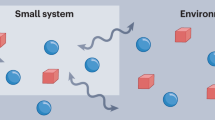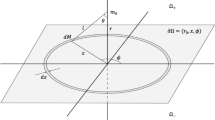Abstract
A SIMPLE relation between the variation of mass in a physical change of state or chemical reaction and the rate of variation with gravitational potential of the corresponding change of total internal energy can be deduced as follows:—Let m1 and m2 denote the masses of the initial and final states of the chemical system and Q the heat evolved, say at constant temperature and pressure, and at the gravitational potential Z. Considering the following isothermal cycle:
This is a preview of subscription content, access via your institution
Access options
Subscribe to this journal
Receive 51 print issues and online access
$199.00 per year
only $3.90 per issue
Buy this article
- Purchase on Springer Link
- Instant access to full article PDF
Prices may be subject to local taxes which are calculated during checkout
Similar content being viewed by others
Author information
Authors and Affiliations
Rights and permissions
About this article
Cite this article
DONNAN, F. Heat of Reaction and Gravitational Field. Nature 104, 392–393 (1919). https://doi.org/10.1038/104392b0
Issue Date:
DOI: https://doi.org/10.1038/104392b0
Comments
By submitting a comment you agree to abide by our Terms and Community Guidelines. If you find something abusive or that does not comply with our terms or guidelines please flag it as inappropriate.



